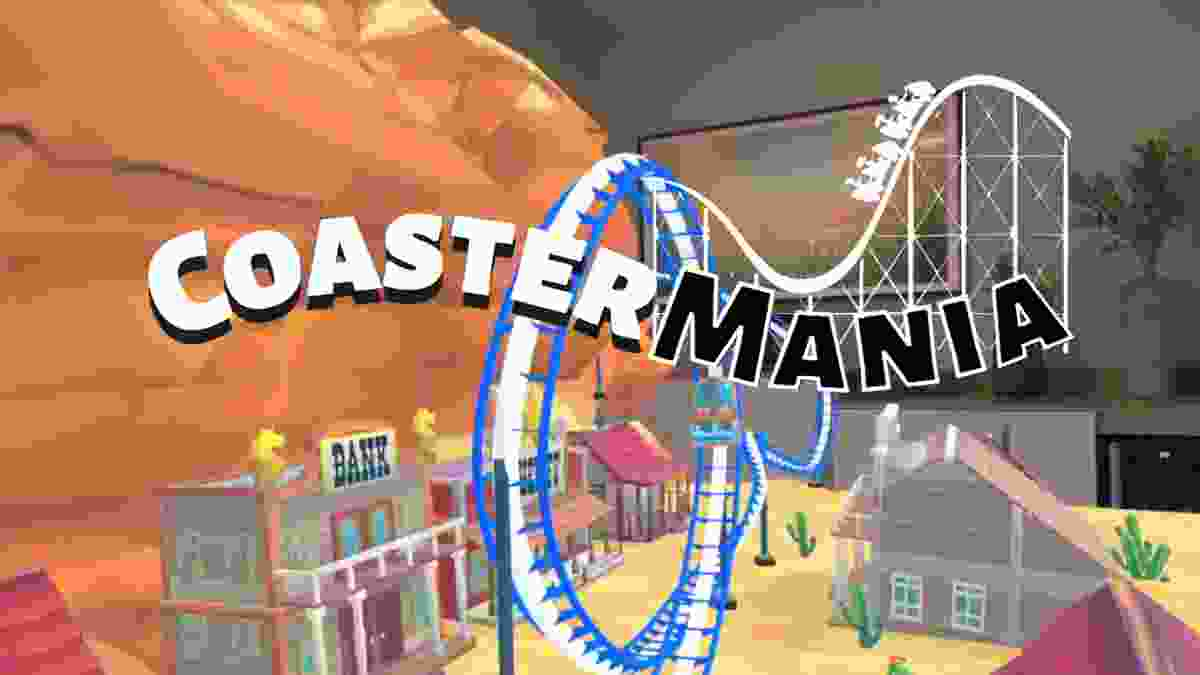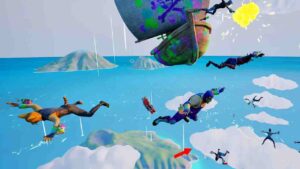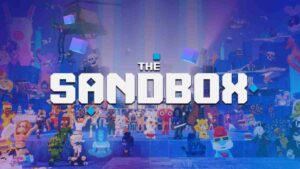CoasterMania isn’t trying to be a deep park management game. If you’re coming in expecting spreadsheets, finances, or queue optimization, this isn’t that. Instead, it leans hard into what VR does best: speed, spectacle, and the physical experience of hurtling down steel tracks in first-person.
It’s less about running a theme park and more about designing chaos. Think instant creation tools, exaggerated coaster physics, and a front-row seat on your own death trap. That angle might disappoint some sim fans, but for others, it’s a solid match for the headset’s strengths.
Fast Building, Minimal Management
The core of CoasterMania is a simplified build-and-ride loop. Tracks can be placed quickly using motion controls, with snapping options that keep the structure functional without requiring much precision. You’re not dealing with terrain tools or extensive menus. It’s fast, sometimes messy, but very accessible.
There’s a sandbox mode for freeform building and a mission mode that introduces basic challenges, though these don’t go far beyond completing specific objectives or testing your coaster’s limits. Management elements like visitor satisfaction, ride upkeep, or revenue simply aren’t part of the equation. The trade-off here is depth for immediacy. If you enjoy tinkering and fine-tuning every bolt like in Planet Coaster, CoasterMania’s simplicity might feel too thin. But if you’re here to build, ride, and tweak in a loop that’s over in minutes, it delivers on that pace.
Visuals and Performance on Quest 3
Graphically, CoasterMania isn’t pushing the Meta Quest 3 to its limits, but it does just enough to sell the fantasy. Tracks, structures, and scenery are stylized and clean, with a bright palette that keeps things readable in motion. The ride experience itself is smooth, which matters most for a game built around movement.
Camera perspectives can be switched, but the real focus is on the front seat view. There’s a physicality to the drops and loops that hits harder in VR than any flat-screen builder can replicate. Motion sickness is a factor, as expected, but it’s surprisingly manageable thanks to performance stability and a few comfort settings.
What’s missing are more nuanced environmental effects or detailed crowds. The park itself feels like a backdrop rather than a living system. Again, CoasterMania isn’t aiming for immersion in the traditional sim sense — it’s more like a VR toy box for building big and going fast.
Where It Fits in the VR Space
CoasterMania fills a very specific gap in the Quest 3 catalog: short-session, creative VR gameplay that focuses on player-made content. It’s less ambitious than titles like Cities: VR, but far more interactive than passive coaster ride simulators that have floated around since the early days of VR.
It doesn’t have the lasting engagement of a true builder sim, but it knows its audience. This is a game about the thrill, not the park. It reflects a broader trend in VR right now — favoring focused, tactile experiences over complex strategy.
That said, there’s room to grow. More tools, a better mission structure, and optional sim depth could push CoasterMania into more interesting territory. For now, it’s a quick-hit creative experience with a clear goal: build something ridiculous, strap in, and see what happens.
Virtual Reality Explorer & Game Reviewer
Always the first to plug in. VRSCOUT dives head-first into the most immersive VR worlds, analyzing mechanics, comfort, innovation, and that elusive “presence” factor. If he says it’s worth it, it probably is.




